Recent Articles
Popular Makes
Body Types
10 Things You Need to Know About the 2019 Honda HR-V
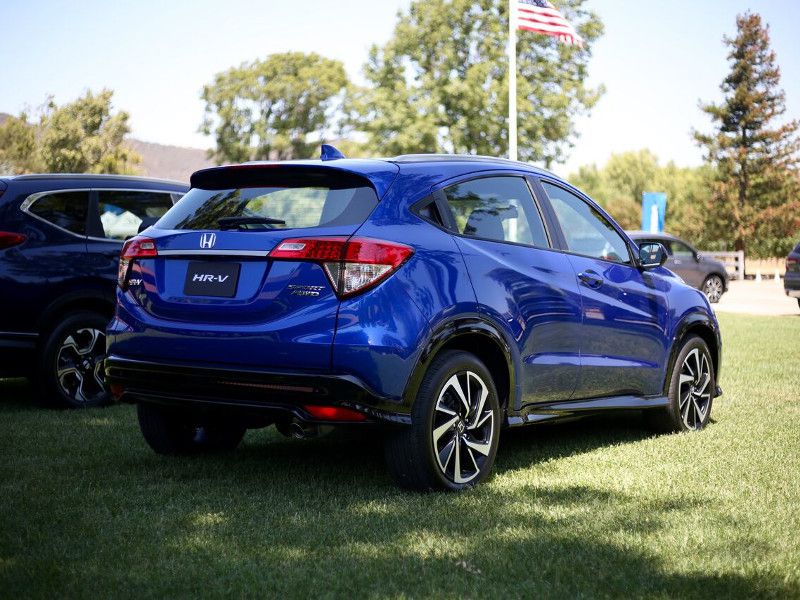
2019 Honda HR V Sport blue parked rearview ・ Photo by Miles Branman
For the first time in Honda’s history, the brand's light trucks (its crossovers, minivan, and pickup) are due to outsell its passenger cars. That statistic is clearly a sign of the times, as most automakers are seeing an increase in SUV consumption, but it’s even more impressive considering Honda’s car sales continue to dominate the mainstream market. In other words, Honda isn’t trading sedan buyers for crossover buyers — it’s simply getting more of both.
But while some light-duty truck models like the CR-V and Odyssey are holding down top spots in their respective U.S. sales segments, there’s room for improvement elsewhere in the lineup. Since it was introduced stateside in 2015, the HR-V subcompact crossover has performed well alongside rivals like the Mazda CX-3 but lagged behind others like the Jeep Renegade and Subaru Crosstrek. To improve the HR-V’s standings, Honda has introduced a number of updates for the 2019 model year. Here are 10 things you should know.
1. The HR-V Sport is a style play.
On paper, the HR-V doesn’t lack many features compared to its key rivals, so one might wonder why such a reputable brand isn’t leading the subcompact segment. The answer may be simple: The HR-V lacks style. Performance and utility are less important to the younger buyers shopping these pint-sized crossovers. Greater value is placed on exterior design at an attractive price.
Enter the 2019 HR-V Sport. With unique exterior cues like 18-inch alloy wheels, black chrome grille trim, gloss black rocker panels, a black chrome roof spoiler, fog lights, roof rails, and an exhaust finisher, the HR-V Sport has genuine curb appeal. Inside, the Sport rocks a leather-wrapped steering wheel and gear selector, two USB ports, and Honda’s 7.0-inch display audio system with Apple CarPlay and Android Auto. At $23,215 including its destination charge, the Sport slots in between the LX and EX trims.
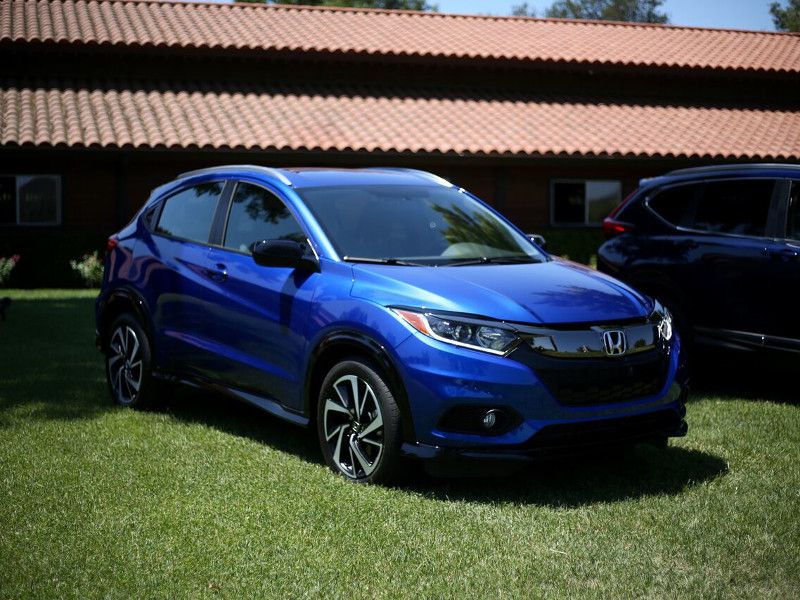
Photo by Miles Branman
2. A range-topping Touring trim brings premium goodies.
What about Millennials with bigger budgets (and higher expectations)? Honda makes an appeal to these buyers with the 2019 HR-V’s other new trim: Touring. To make its range-topping HR-V, Honda applies every feature from the LX to EX-L trims, then adds standard all-wheel drive, navigation, unique LED headlights and fog lights, an 8-way power driver’s seat, and Homelink.
The sheer number of goodies on the HR-V Touring could rival an entry-level luxury model, but the price is a rather proletarian $29,535 (including destination). In this spec, Honda may even attract empty-nesters who don’t need a ton of space but prefer the access height of a crossover.
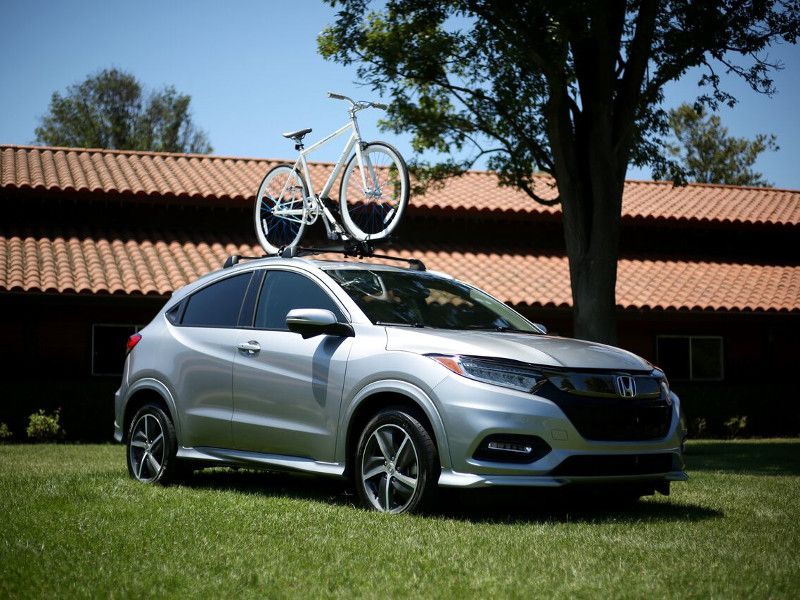
Photo by Miles Branman
3. The HR-V's design now mirrors the new CR-V and Accord.
In the new Sport trim or otherwise, every 2019 HR-V gets a visual makeover to bring it in line with Honda’s current design language. Notable exterior tweaks include a bigger chrome grille brow, new wheel designs, redesigned projector headlamps, larger fog light housings, smoked turn signals, and three new colors: Orange Burst Metallic, Midnight Amethyst Metallic, and Platinum White Pearl.
Inside are new seat fabrics and upper door panels, plus a revised cupholder (always important). While none of these changes are dramatic, they add up to make the 2019 HR-V more upscale and eye-catching.
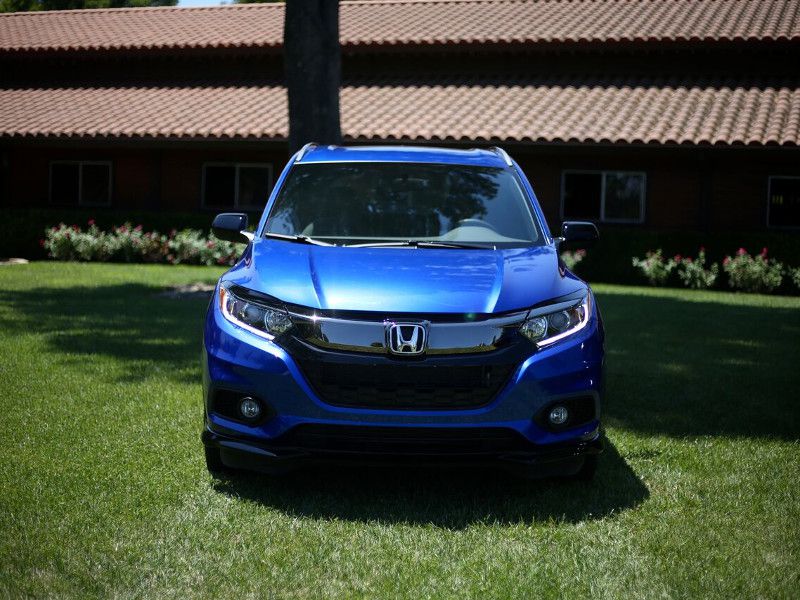
Photo by Miles Branman
4. Honda Sensing driver aids have arrived.
For 2019, Honda’s suite of driver assistance features trickles down to the HR-V as standard equipment for EX and above trims. Until now, the HR-V was the only Honda offered without this technology. The Honda Sensing package includes adaptive cruise control, a collision-mitigating braking system, lane-keep assist, road-departure mitigation, and a lane-departure warning.
These aids accompany Honda’s LaneWatch camera system and structural improvements in the HR-V’s A-pillars to make an overall safer vehicle. The Insurance Institute for Highway Safety now gives the HR-V a Good score (its best rating) for small-offset frontal collisions. Other standard safety features for all HR-V trims include a multi-angle backup camera with gridlines, electronic brake distribution, and brake assist.
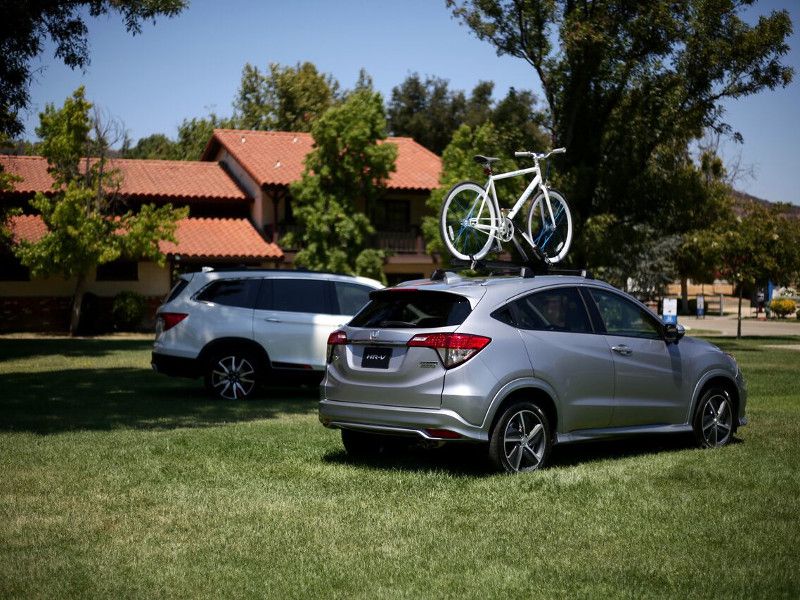
Photo by Miles Branman
5. Bid farewell to the manual transmission.
To this point, both the LX and the EX trim HR-Vs came equipped with a six-speed manual transmission, but for the 2019 model year, Honda is slotting a reworked CVT (continuously variable transmission) into every HR-V. Honda says its CVT improvements make the driving experience feel more natural.
Specifically, at full throttle, the CVT’s new shift mapping resembles traditional automatic gear changes. Despite the fact that the CVT has been used in a number of mainstream cars for a while now, Honda believes this “stepped” feel is more familiar to drivers. When you're decelerating, the CVT also jumps to higher revs for additional engine braking and more responsiveness.
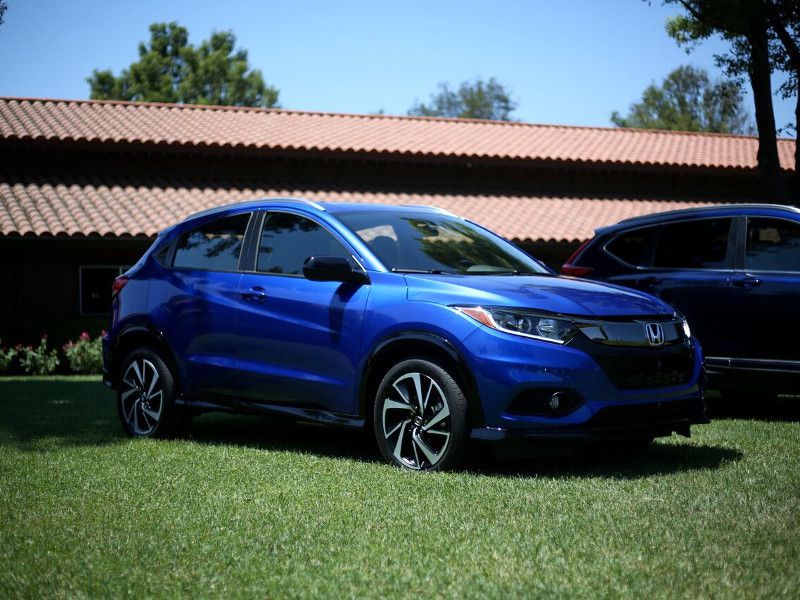
Photo by Miles Branman
6. The pickup-style "magic seats" are seriously clever.
Those who have toyed with the cargo configurations in a modern pickup know the benefits of dual-hinged rear seats. Folding the bottom cushion to meet the seatback expands storage considerably. The Honda HR-V uses a similar idea for its “magic seats.”
In one easy move, either of the 60/40-split rear seatbacks can fold down nearly flat (without needing to remove the head restraints). This expands the HR-V’s cargo space from 24.3 cubic feet behind the rear seats to a generous 58.8 cubic feet. These figures are best-in-class by a good margin. Alternatively (and here’s the cool part), either or both of the rear seat cushions can be folded upward and locked into place. This configuration makes room for tall items to like plants or two mountain bikes with the front wheels removed.
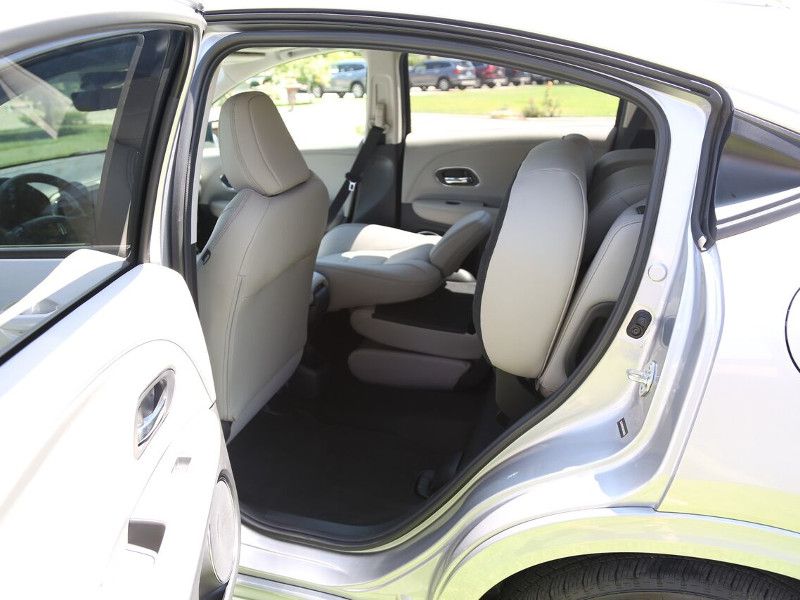
Photo by Miles Branman
7. The volume knob is back, baby!
Change for the sake of change isn’t typically a good idea. That’s a lesson Honda learned the hard way when it redesigned its infotainment system two years ago. The touchscreen trend lured the Japanese automaker into removing all its physical buttons and knobs from its display audio system. The result was a clean aesthetic — at the cost of user-friendliness.
Alas, after customers and media rejected the new module (or at least complained loudly enough), Honda made a fix. The 2019 HR-V now features a volume knob to accompany the set of touch controls. That isn’t the only improvement, either. Sport and above trims gain Apple CarPlay and Android Auto integration, for a more contemporary and easy-to-use multimedia system.
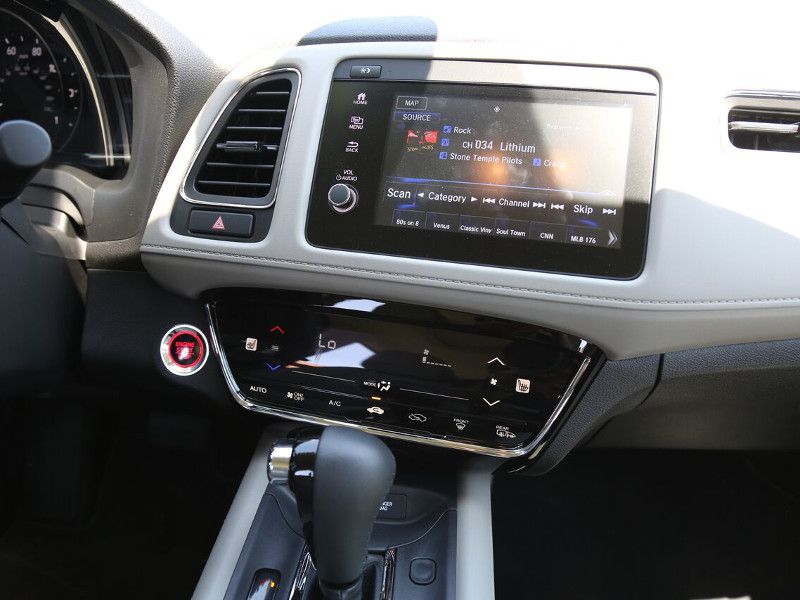
Photo by Miles Branman
8. Real-time all-wheel drive is now better in the snow.
The 2019 Honda HR-V is available in two drivetrain configurations: front-wheel drive or all-wheel drive. Increasingly, crossover buyers prefer AWD for its performance in all driving conditions (provided they equip a good set of season-specific tires).
Honda has made an effort to improve its “real-time” system to meet these customers’ needs, focusing specifically on the HR-V’s low-traction maneuverability. What exactly has been adjusted is unclear, but we can guess smoother power delivery and a better slip sensor lead to improved traction from a dig.

Photo by Miles Branman
9. You won't win any drag races in this thing.
Unchanged for the 2019 model year is the HR-V’s 1.8-liter four-cylinder engine. That means the subcompact crossover still produces 141 hp and 127 lb-ft of torque, on the low end for its segment. With only about 3,000 pounds to lug around, the puny powertrain is sufficient for city and highway motoring, but no one would accuse the HR-V of being peppy. It’s a shame Honda doesn’t slot in its 1.5-liter turbocharged four-cylinder from the Civic; 180 hp would go a long way in the HR-V.
The power deficit doesn’t give it any distinct fuel economy advantage, either. The HR-V AWD model's 29 mpg in mixed driving is matched by the Subaru Crosstrek and Mazda CX-3.
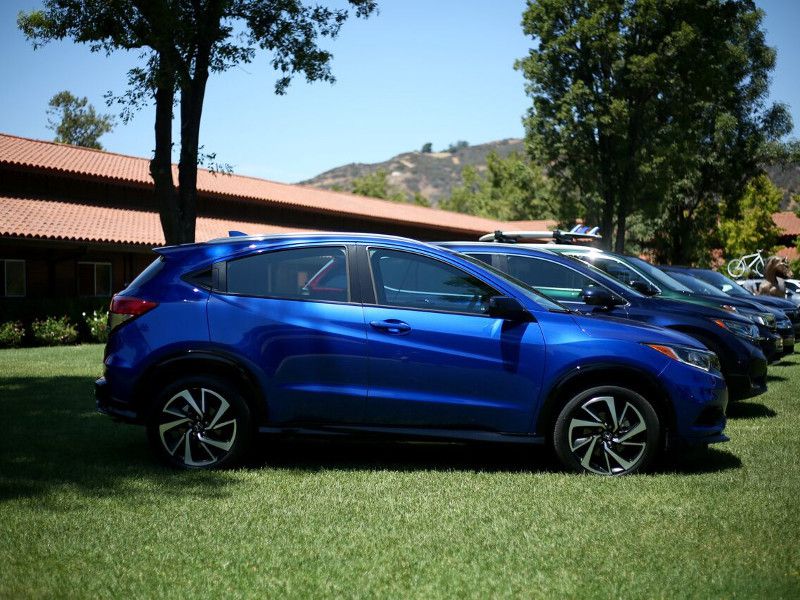
Photo by Miles Branman
10. The HR-V is quieter than ever.
Economy cars are often plagued by high levels of road and wind noise, but Honda has taken steps to make its affordable HR-V feel like a premium product. All 2019 HR-V models benefit from additional sound-deadening measures, including extra sound-absorbing materials in the firewall, under the floor, and in the passenger-side footwell.
The Sport trim and higher also receive active noise cancellation, which sends reverse-phase audio signals through the HR-V's audio system to cancel out low-frequency road noise. Honda’s improvements to the CVT also play a role, with the transmission keeping the engine at lower revs more often to reduce noise levels.
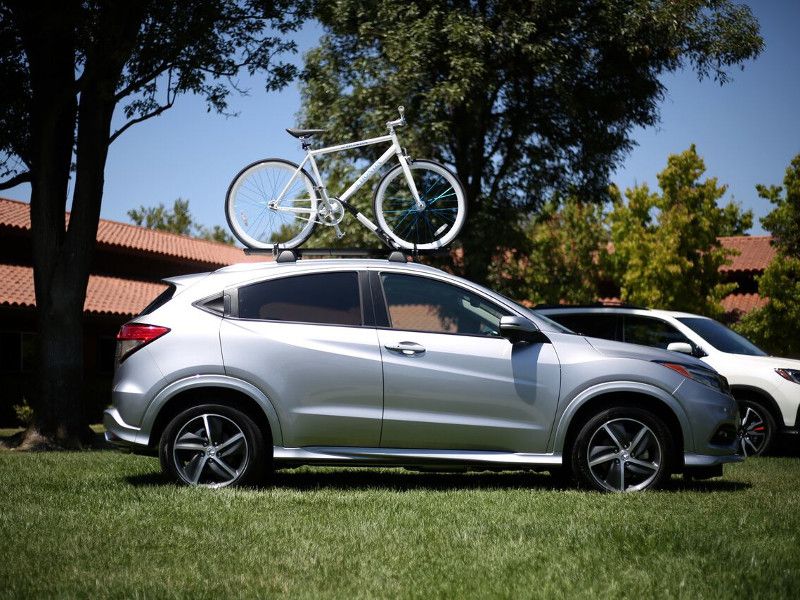
Photo by Miles Branman